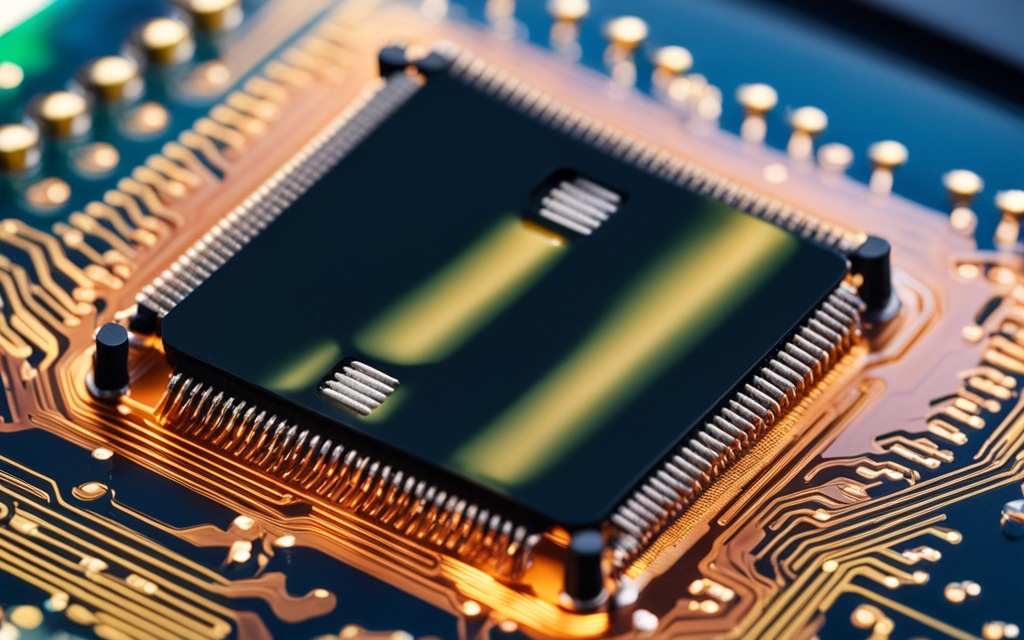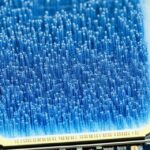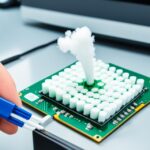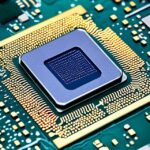Table of Contents
Cleaning thermal paste from CPU pins is crucial. It directly impacts your computer’s performance. Not cleaning it properly can cause overheating and other issues. This guide will show you how to clean it well and keep your hardware safe. It is critical to remove leftover thermal paste to ensure your computer works smoothly. Using the correct techniques and tools is important to avoid damage.
For the best results, use a cleaning solution with at least 99% isopropyl alcohol. A soft toothbrush helps in cleaning PGA connectors effectively. For LGA connectors, products like the Kooling Monster KLEAN-01 are perfect. Remember, wrong handling of thermal paste can affect your PC’s performance. It might cause your computer to not boot up if conductive paste touches motherboard pins123.
Key Takeaways
- Always prioritise using at least 99% isopropyl alcohol for effective cleaning.
- A soft bristle toothbrush can be beneficial for cleaning PGA connectors.
- Properly clean thermal paste from CPU pins to avoid overheating issues.
- Electrical shorts can arise from conductive thermal paste on the motherboard.
- Invest in quality cleaning products, such as thermal paste removers, for effective results.
- Utilise safety equipment to protect your CPU and yourself during the cleaning process.
Understanding Thermal Paste and Its Importance
Thermal paste is crucial for keeping computer parts running well. It helps avoid problems with your computer by filling gaps between the CPU and heatsink. This makes sure your computer stays in top condition.
What is Thermal Paste?
Thermal paste, also known as thermal compound, is vital for a good CPU and heatsink connection. It fills tiny spaces, improving heat transfer. This keeps your CPU working its best.
The Role of Thermal Paste in CPU Performance
Thermal paste does more than just connect parts. It stops the CPU from getting too hot during heavy work. Using it right means your computer won’t overheat or get damaged. It’s key for a smoothly running PC.
Common Accidents: When Thermal Paste Contacts CPU Pins
It’s important to know about mistakes with thermal paste. Sometimes it gets on places it shouldn’t, like the CPU pins. This can make your computer not work right.
If paste gets on the pins, it might cause shorts that harm the motherboard. You must clean it carefully to avoid more problems. Proper cleaning is a must.
Want to clean up paste safely? Use isopropyl alcohol that’s very pure. Make sure your cleaning tools are clean too. For more tips on doing this right, have a look at this guide. You can find more advice here too43.
Risks Associated with Thermal Paste on CPU Pins
When applied right, thermal paste helps your system run better. But, if it gets on the CPU pins, it can cause trouble. It’s important to know about these risks to keep your computer healthy.
Electrical Conductivity Issues
The big worry is about conductivity issues. Even though non-conductive paste isn’t an immediate problem, conductive materials can create short circuits. This can mess up your system. Most thermal pastes used during assembly are safe since they’re non-conductive5 and6.
Reduced Performance and System Instability
Thermal paste on CPU pins can also affect communication with the motherboard. This can lower system performance and lead to crashes. Some CPUs work fine even with bent pins, showing performance can still be top-notch5.
Difficulty in CPU Removal
Leftover thermal paste makes removing the CPU hard. Careless removal can harm your computer. Many users have damaged their systems while cleaning off thermal paste6.
Corrosion and Oxidation Concerns
Over time, corrosion from thermal paste can become a big problem. It can cause oxidation and harm metal parts, leading to connection problems and failures7. To clean it, isopropyl alcohol works great. It takes off the paste without leaving anything behind7.
Preparation for Cleaning CPU Pins
Before you start the delicate job of cleaning CPU pins, it’s key to know what you’ll need. It’s also important to understand how to keep safe. Getting ready the right way helps make the cleaning smooth and keeps your hardware safe.
Essential Supplies Needed
Here are the must-haves for CPU maintenance:
- Isopropyl alcohol (90% or higher) – It dissolves thermal paste safely.
- Soft bristle toothbrush – It’s for brushing away residue gently.
- Cotton swabs – They help clean tight spots precisely.
- Lint-free cloth – This ensures no fibres are left behind.
- Compressed air – Great for removing dust and loose particles.
These items ensure a thorough and safe cleaning of the thermal paste.
Safety Measures to Take Before Starting
Safety first when it comes to cleaning. Here’s what to do:
- Keep your workspace tidy to avoid contamination.
- Turn off and unplug the device before you start.
- Ground yourself to avoid damaging components with static electricity.
- Make sure the area is well-ventilated to avoid inhaling fumes.
Following these safety steps lowers the chances of harming your CPU or yourself.
Getting ready to clean the thermal paste sets you up for success. It ensures a good cleaning job8.
How to Clean Thermal Paste off CPU Pins
To clean thermal paste off CPU pins, you need to be precise and careful. It’s an important process that involves cleaning step by step. This helps avoid damage while removing residue effectively.
Step-by-Step Cleaning Process
First, take the CPU out of its socket with care. Then, get your cleaning materials ready. You’ll need high-quality isopropyl alcohol, at least 99%, and some cleaning swabs. Wet a swab with the alcohol and softly clean each pin. Make sure to apply gentle pressure to avoid bending them.
It’s vital to remove all the thermal paste because leftover paste can cause electrical problems. These can lead to overheating or your system not working9. After cleaning with alcohol, use compressed air to blow away any particles. Let the CPU pins dry fully before you put the CPU back.
Tips for Effective Cleaning
Here are some tips for cleaning CPU pins effectively: always move gently to keep pins from being damaged. Change your swabs often to avoid spreading the dirt around. After cleaning, check the pins to make sure there’s no residue left. Some suggest using special products, like Kooling Monster KLEAN-01, for easier cleaning1.
Interestingly, 80% of users find alcohol-based cleaners the best for removing thermal paste10. A bright, well-lit space can also help you see and remove any leftover residue on the pins.
Post-Cleaning Checks and Reinstallation
After cleaning, it’s key to do thorough checks. This makes sure everything is ready for the next steps.
Visually Inspecting the CPU Pins
After cleaning, you must inspect the CPU pins. Look for any damage or leftover thermal paste. This could stop the CPU from connecting properly. By checking carefully, you ensure the CPU can be used safely.
Reinstalling the CPU Safely
Putting the CPU back needs caution. It should sit in its socket without too much force. Make sure the pins line up right, then lock the socket lever. It’s vital to reconnect the cooling system gently. Check for any thermal paste spills to prevent overheating or damage.
Doing these checks after cleaning helps your CPU last longer. It also promotes good tech maintenance habits4.
Conclusion
Keeping your CPU clean is key to its best performance. Removing old thermal paste from CPU pins is a critical step in CPU care. Not doing this can lead to big problems like slower performance, overheating, or even hardware breakdown. This shows why cleaning well is so important1112.
Using the right tools, like isopropyl alcohol with a high concentration, helps a lot. By following clear step-by-step guides, you’re more likely to clean your CPU well. Regular checks and being careful can make your CPU last longer and run better13.
When you look after your CPU well, it helps it last longer and work more efficiently. Every effort you make to clean it well is a good investment. It keeps your system healthy, enhancing your computing experience.
FAQ
How often should I clean thermal paste from CPU pins?
You should inspect and clean the CPU pins each time you work on your PC. Regular checks prevent buildup and ensure your CPU runs well.
What supplies do I need to clean thermal paste from CPU pins?
You need isopropyl alcohol (91% or higher), a soft toothbrush, cotton swabs, lint-free cloth, and compressed air. These items help clean without harming your PC.
Can I use other solvents instead of isopropyl alcohol?
Other solvents can work, but isopropyl alcohol is best. It cleans well and dries fast, reducing the risk of moisture damage.
What are the risks of leaving thermal paste on CPU pins?
Leaving paste on CPU pins can cause short circuits and reduce performance. It may lead to system crashes and make removing the CPU hard. This could harm your computer.
How can I visually inspect CPU pins after cleaning?
Look at the CPU under a bright light after cleaning. Make sure there’s no paste left and no pins are damaged. This ensures good connection when you put the CPU back.
Is it possible to damage CPU pins during cleaning?
Yes, cleaning requires caution. Gentle use of soft brushes helps avoid bending or harming CPU pins.
What should I do if I accidentally get thermal paste on my motherboard?
If paste gets on the motherboard, clean it off quickly with isopropyl alcohol and a lint-free cloth. Immediate action prevents damage.
How do I safely reinstall the CPU after cleaning?
Check the pins align with the socket before placing the CPU gently. Don’t force it in. After that, secure the socket lever and reconnect the cooler before turning your PC back on.
Source Links
- https://koolingmonster.com/insights/thermal-paste-on-cpu-pin-how-to-remove-thermal-paste-from-cpu-socket – Thermal Paste on CPU Pin? How to Remove Thermal Paste from CPU Socket? — Kooling Monster
- https://www.techpowerup.com/forums/threads/accidentally-got-thermal-paste-in-my-am4-socket.314896/ – Accidentally got thermal paste in my AM4 socket…
- https://www.jawa.gg/blog/how-to-clean-thermal-paste-off-cpu-pins/ – How to Clean Thermal Paste off CPU Pins
- https://www.electronicshub.org/clean-thermal-paste-off-cpu/ – How To Clean Thermal Paste Off CPU?
- https://www.techpowerup.com/forums/threads/a-little-bit-of-thermal-paste-on-the-pins-of-my-cpu-3600x.259577/ – a little bit of thermal paste on the pins of my cpu 3600x
- https://forums.tomshardware.com/threads/thermal-paste-on-cpu-pins-and-motherboard-socket.3805939/ – Question – Thermal Paste on CPU Pins and motherboard socket
- https://www.jawa.gg/blog/how-to-remove-thermal-paste-from-cpu-pins/ – How to Remove Thermal Paste from CPU Pins
- https://www.tomshardware.com/how-to/remove-thermal-paste-cpu – How To Remove Thermal Paste From a CPU
- https://softwareg.com.au/blogs/computer-hardware/thermal-paste-on-cpu-pins – Thermal Paste On CPU Pins
- https://community.spiceworks.com/t/remove-thermal-paste-from-cpu-pins/758372 – Remove thermal paste from CPU pins
- https://medium.com/@muhammadahmedseo580/9-steps-to-remove-thermal-paste-from-cpu-7c8fef5b8fae – 9 Steps to Remove Thermal Paste From CPU
- https://community.spiceworks.com/t/make-your-own-thermal-paste-remover/433002 – Make Your Own Thermal Paste Remover?
- https://www.linkedin.com/pulse/how-remove-thermal-paste-without-alcohol-sajal-manjhi-k0wlf – How to Remove Thermal Paste without Alcohol








